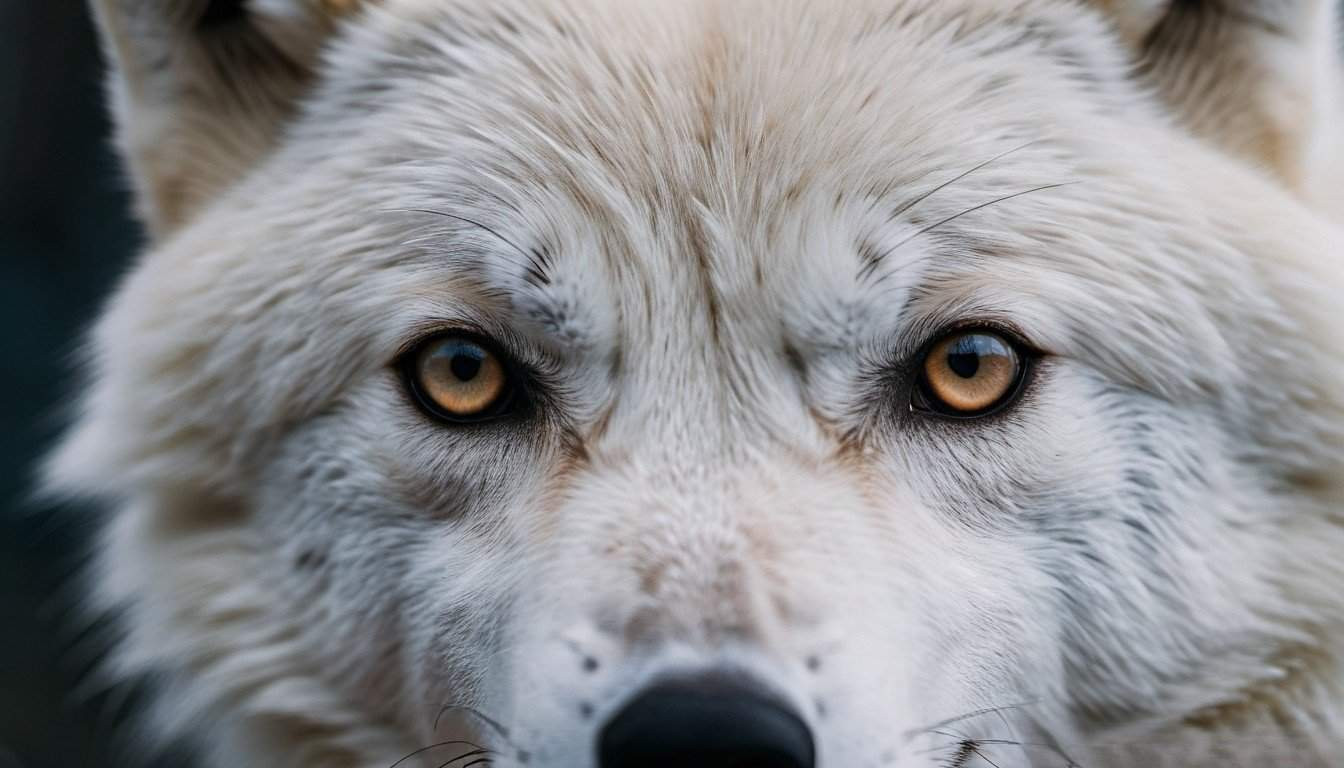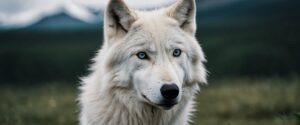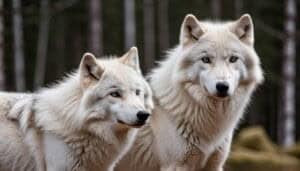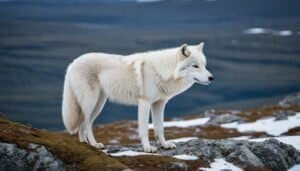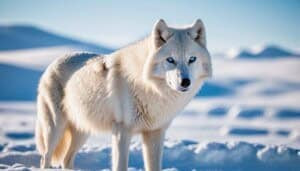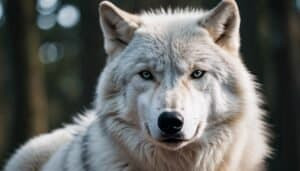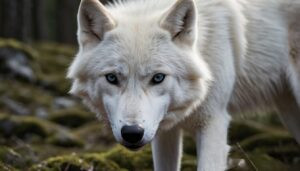Introduction
Understanding the visual acuity of an Arctic wolf is essential to comprehending how these predators navigate and survive in the harsh Arctic environment. This article will explore how their vision compares to humans, the adaptations that allow them to thrive, and how their eyesight aids in hunting and social behavior
Additionally, we will delve into the development and health of their vision, ensuring a comprehensive understanding of these magnificent creatures
Understanding Arctic Wolf Vision
Arctic wolves possess remarkable visual capabilities that are finely tuned to their harsh and often dim environment. Their visual acuity, or the sharpness of their vision, plays a crucial role in their survival, helping them navigate and hunt in the Arctic’s challenging conditions
Visual Acuity of Arctic Wolves Compared to Humans
The visual acuity of an Arctic wolf is generally superior to that of humans when it comes to detecting movement and seeing in low-light conditions. While humans typically rely on a combination of visual acuity and color vision, Arctic wolves have evolved to prioritize movement detection and night vision. This adaptation is essential for hunting in the dim Arctic twilight and during the long winter nights
Arctic wolves have a higher density of rod cells in their retinas compared to humans. Rod cells are photoreceptor cells in the eye that are highly sensitive to low light levels. This abundance of rod cells enables Arctic wolves to see well in near-darkness, a crucial adaptation for their nocturnal hunting habits. However, this comes at the expense of color vision, which is less developed in wolves compared to humans
Adaptations to Arctic Environment
The Arctic environment presents unique challenges, and the Arctic wolf’s vision has evolved to meet these demands. Their eyes are adapted to the bright, reflective snow and ice, reducing glare and improving their ability to spot prey against a white background. The reflective layer behind their retina, known as the tapetum lucidum, enhances their night vision by reflecting light that passes through the retina back into their eyes, giving them a second chance to detect light
This adaptation not only improves their ability to see in low light but also enhances their depth perception and motion detection. These visual traits are essential for tracking and hunting prey in an environment where food can be scarce and difficult to find
Low-Light Vision Capabilities
Arctic wolves excel in low-light conditions, which is critical for their survival during the polar night, when the sun does not rise above the horizon for weeks or months. Their retinas are packed with rod cells, which are more sensitive to light than cone cells, allowing them to detect even the faintest movements in the dark
This heightened sensitivity to light enables Arctic wolves to hunt effectively at dawn, dusk, and during the night. Their ability to see in low light also aids in avoiding potential dangers and navigating the rugged Arctic terrain
Vision in Arctic Wolves: Hunting and Social Behavior
Arctic wolves rely heavily on their vision for both hunting and social interactions within their packs. Their eyes are adapted to detect movement and spot prey, while also facilitating communication and social bonding among pack members
Hunting Strategies
Arctic wolves use their keen vision to detect and track prey over vast distances. Their ability to spot movement from afar allows them to identify potential targets such as muskoxen, caribou, and Arctic hares. Once they have identified a target, they employ a combination of stalking and ambush tactics to catch their prey
The wolves’ vision helps them coordinate during hunts, as pack members can signal each other with visual cues to execute complex hunting strategies. For example, they might use eye contact and body language to indicate when to start the chase or to flank the prey from different directions. This level of coordination is crucial for taking down larger animals that require multiple wolves to subdue
Role of Vision in Predation
Vision plays a critical role in every stage of predation, from the initial sighting of prey to the final capture. Arctic wolves’ ability to detect subtle movements and changes in their environment gives them an edge when stalking their prey. Their eyes are positioned forward on their heads, providing them with binocular vision, which enhances depth perception and allows for precise targeting of their prey
During the chase, the wolves’ excellent peripheral vision helps them keep track of both the fleeing prey and their pack members, ensuring they can adjust their tactics as needed. This combination of acute forward and peripheral vision makes Arctic wolves highly effective hunters
Comparison to Other Predators
When compared to other predators, Arctic wolves have adapted uniquely to their extreme environment. While many predators rely on a combination of sight, smell, and hearing, Arctic wolves’ vision is particularly fine-tuned for detecting motion and seeing in low-light conditions. This sets them apart from predators like lions or cheetahs, which hunt primarily during the day and rely more on speed and strength
In contrast, the Arctic wolf’s visual adaptations are similar to those of other nocturnal or crepuscular hunters, such as owls or foxes, which also depend on heightened low-light vision to catch their prey. However, the Arctic wolf’s social hunting strategies and pack dynamics add a layer of complexity that is less common among solitary hunters
Visual Cues in Pack Dynamics
Vision is not only essential for hunting but also for maintaining social order within the pack. Arctic wolves use a variety of visual cues to communicate with each other, including body language, facial expressions, and eye contact. These cues help establish hierarchies, reinforce bonds, and coordinate group activities
For instance, dominant wolves might use prolonged eye contact and assertive postures to establish their status, while submissive wolves might avoid direct eye contact and exhibit lower body postures. These visual signals help maintain harmony and cooperation within the pack, ensuring its stability and success
Role of Vision in Mating Rituals
During the mating season, Arctic wolves rely on visual cues to attract and select mates. Males often display various behaviors and postures to court females, and successful mating often involves intricate visual communication. This can include playful gestures, mutual grooming, and other forms of body language that strengthen the bond between potential mates
The ability to read these visual signals correctly is vital for reproductive success, ensuring that only the most compatible pairs form and contribute to the genetic diversity of the pack
Eye Adaptations for Social Interaction
Arctic wolves’ eyes are adapted not only for hunting but also for reading the emotions and intentions of their pack members. Their expressive eyes can convey a range of emotions, from aggression to affection, facilitating complex social interactions. This ability to interpret visual signals enhances their cooperation and cohesion as a pack, making them highly effective as both hunters and social animals
Development and Health of Arctic Wolf Vision
The vision of Arctic wolves not only plays a crucial role in their survival and social dynamics but also undergoes significant development from birth and can be affected by various health factors throughout their lives. Understanding how their vision develops and the common health issues they face is essential to comprehending their overall well-being
Vision Development in Pups
Arctic wolf pups are born with their eyes closed, and it takes about 10 to 14 days for their eyes to open. During the first few weeks, their vision is still developing, and they rely heavily on their sense of smell and touch to navigate their immediate environment and recognize their mother and littermates
As the pups grow, their eyesight gradually improves. By the time they are about 8 weeks old, they begin to see the world more clearly and start to explore their surroundings. This period is crucial for their visual development, as they learn to coordinate their movements and develop the hunting and social skills they will need as adults
Common Vision-Related Health Issues
Like all animals, Arctic wolves can suffer from various vision-related health issues. These can include congenital conditions, infections, injuries, and age-related degeneration
Congenital Conditions: Some Arctic wolves may be born with congenital eye defects such as cataracts or retinal dysplasia. These conditions can impair their vision and affect their ability to hunt and navigate their environment
Infections: Eye infections, often caused by bacteria, viruses, or parasites, can lead to inflammation and damage to the eyes if not treated promptly. Symptoms might include redness, swelling, discharge, and discomfort
Injuries: Living in a harsh and rugged environment, Arctic wolves are prone to eye injuries from fights with other animals, encounters with prey, or environmental hazards like sharp ice and rocks. These injuries can range from minor scratches to more severe trauma that might lead to vision loss
Age-Related Degeneration: As Arctic wolves age, they can experience degenerative eye conditions such as cataracts or progressive retinal atrophy. These conditions can diminish their visual acuity and overall quality of life
Environmental Threats to Vision
The Arctic environment itself poses several threats to the vision of Arctic wolves. Extreme cold, reflective snow and ice, and limited light conditions can all impact their eye health
Snow Blindness: Prolonged exposure to the intense reflection of sunlight off snow and ice can cause snow blindness, a painful condition similar to sunburn on the cornea. Wolves must often rely on instinct and shaded areas to protect their eyes from excessive glare
Harsh Weather: Strong winds, ice particles, and frigid temperatures can lead to irritation and damage to the eyes. Wolves may squint or keep their eyes partially closed to shield them from the elements, but constant exposure can still take a toll over time.
Pollution and Climate Change: Increasing human activity and environmental changes in the Arctic can introduce new hazards, such as pollutants that affect the wolves’ overall health, including their vision. Climate change can also alter the availability of prey and the landscape, impacting the wolves’ hunting strategies and social behavior
Conclusion
Understanding the visual acuity of an Arctic wolf provides deep insights into how these resilient predators thrive in their harsh environment. Their vision, finely tuned for detecting movement and seeing in low-light conditions, is crucial for hunting, navigating, and social interactions within their packs. Arctic wolves possess superior night vision compared to humans, an adaptation that allows them to hunt effectively during the long Arctic nights and twilight
Their visual abilities are not just limited to predation; they play a significant role in pack dynamics, aiding in communication through visual cues, maintaining social hierarchies, and facilitating mating rituals. Furthermore, the development of vision in Arctic wolf pups is a gradual process that equips them with the necessary skills for survival
Despite their remarkable visual adaptations, Arctic wolves are not immune to vision-related health issues. They can suffer from congenital conditions, infections, injuries, and age-related degeneration, all of which can impact their ability to hunt and interact within their environment. Environmental factors such as snow blindness, harsh weather, and pollution also pose significant threats to their vision
By comprehending the various aspects of Arctic wolf vision, from its development and health to its critical role in hunting and social behavior, we gain a comprehensive understanding of how these magnificent animals have adapted to one of the most challenging habitats on Earth
